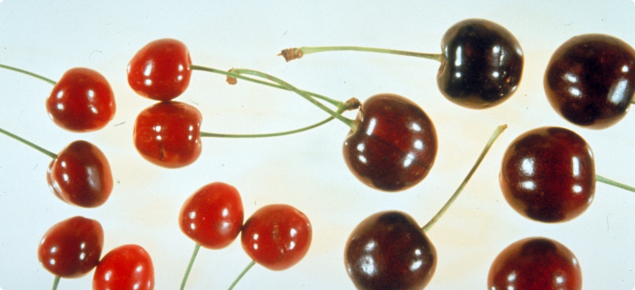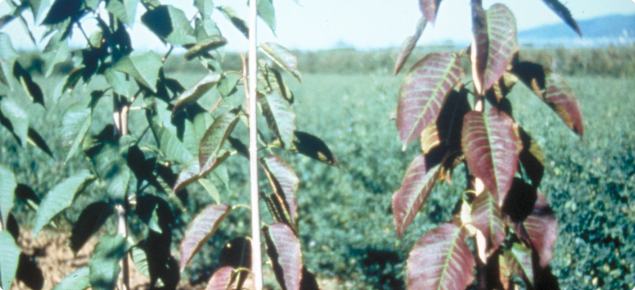What plants are affected?
LChV-2 affects sweet cherry (Prunus avium) and sour cherry (P. cerasus). It can also infect cultivars of the oriental flowering cherry (P. serrulata) but these infections are symptomless.
What do I look for?
Symptoms are rarely seen in the orchard until 10 days prior to harvest. At this stage fruits often:
- appear smaller than healthy fruits
- look discoloured
- fail to fully ripen
- have reduced sweetness.
Leaf symptoms can also be seen in some sweet cherry cultivars. In such cases the intervenal areas of the upper leaf surface turn a red-violet or bronze colour while the midrib and main veins retain their green colour.
What damage can this pest cause?
Little cherry disease primarily affects fruit size and quality and therefore impacts marketability. Fruits are smaller than normal and lack both flavour and colour.
What do I do if I find it?
Ampelovirus Little cherry virus 2 (LChV-2) is a prohibited organism for Western Australia. It is important that suspected disease occurrence is reported. Its early detection and eradication will help protect Western Australian cherry growers. Please contact the Pest and Disease Information Service (PaDIS) to report this pest.


